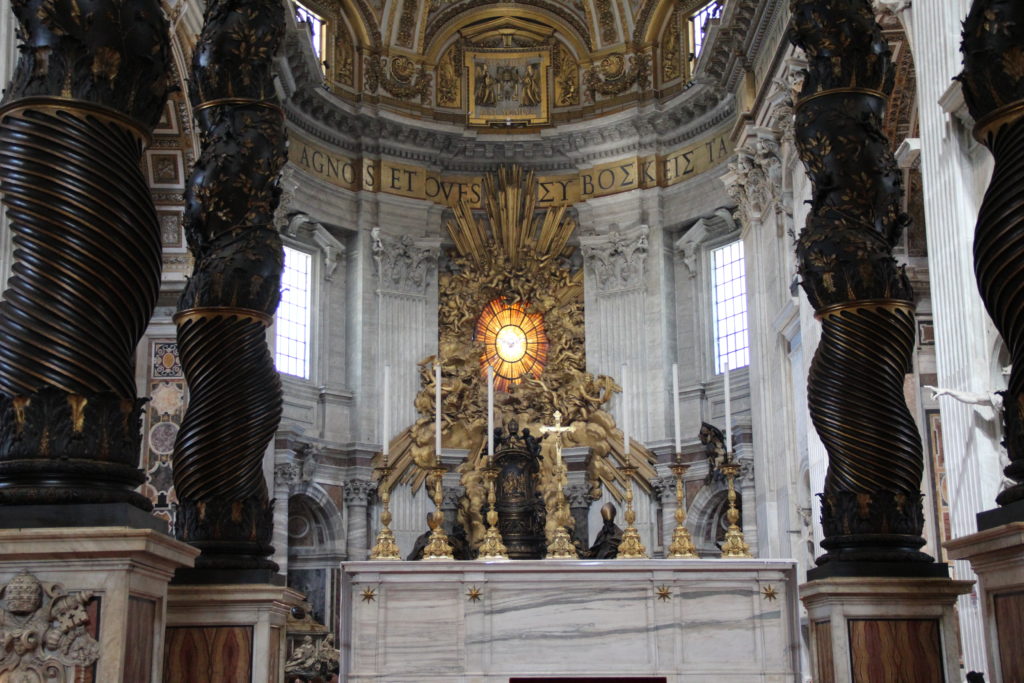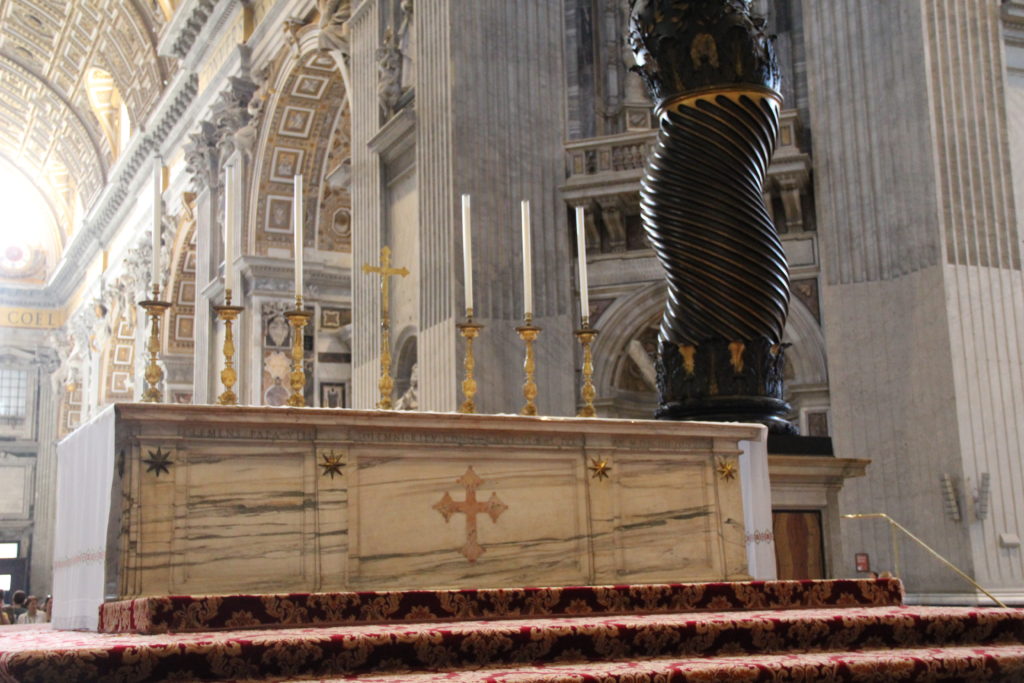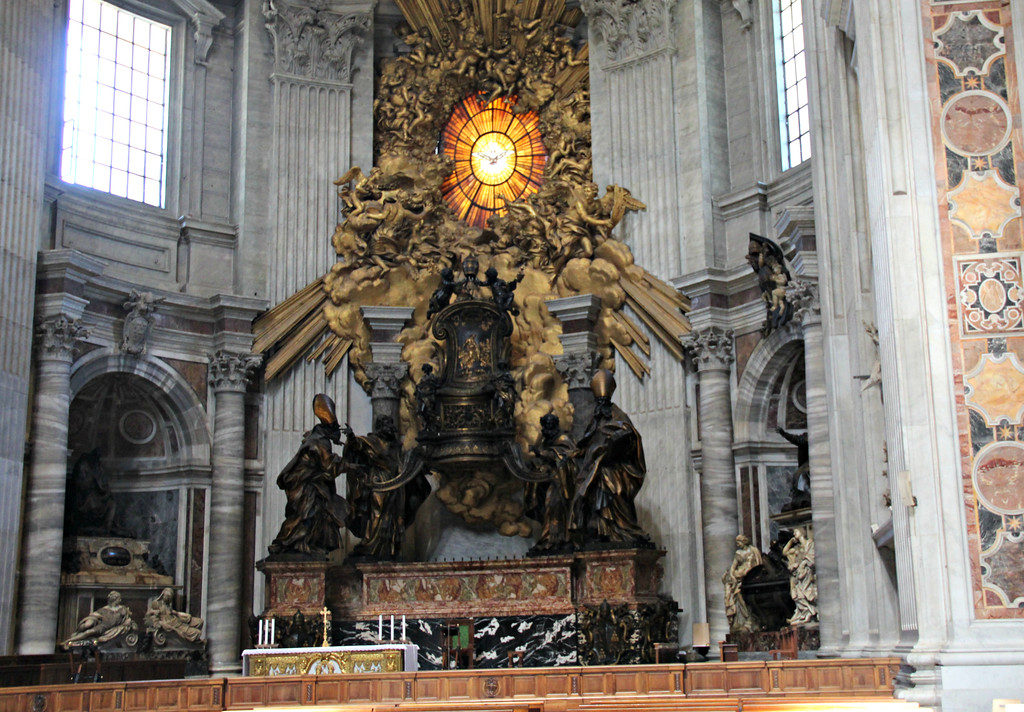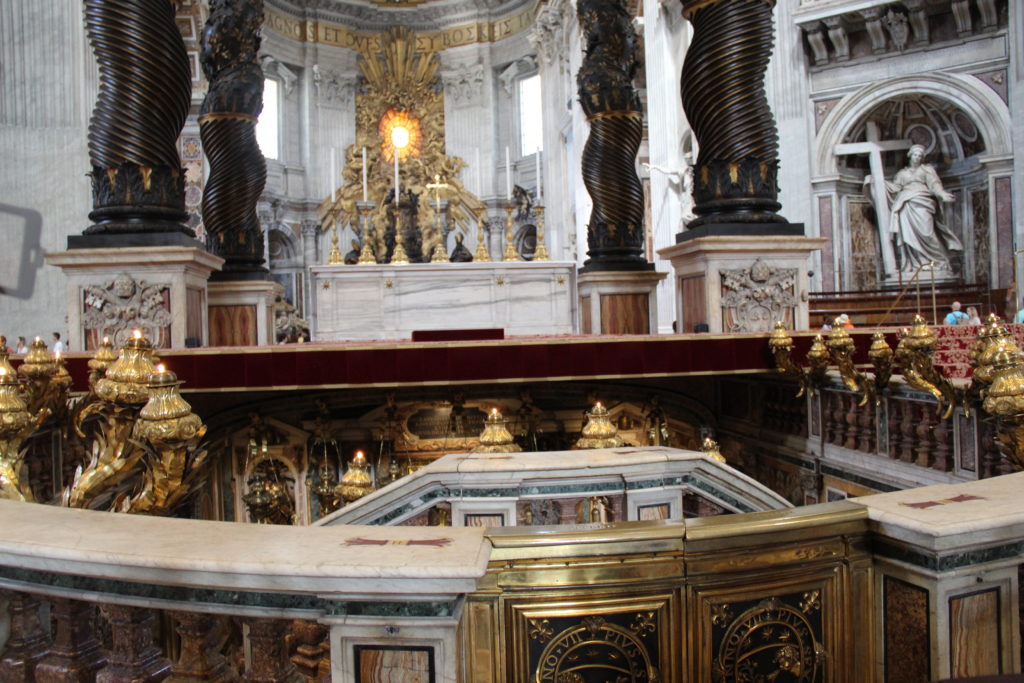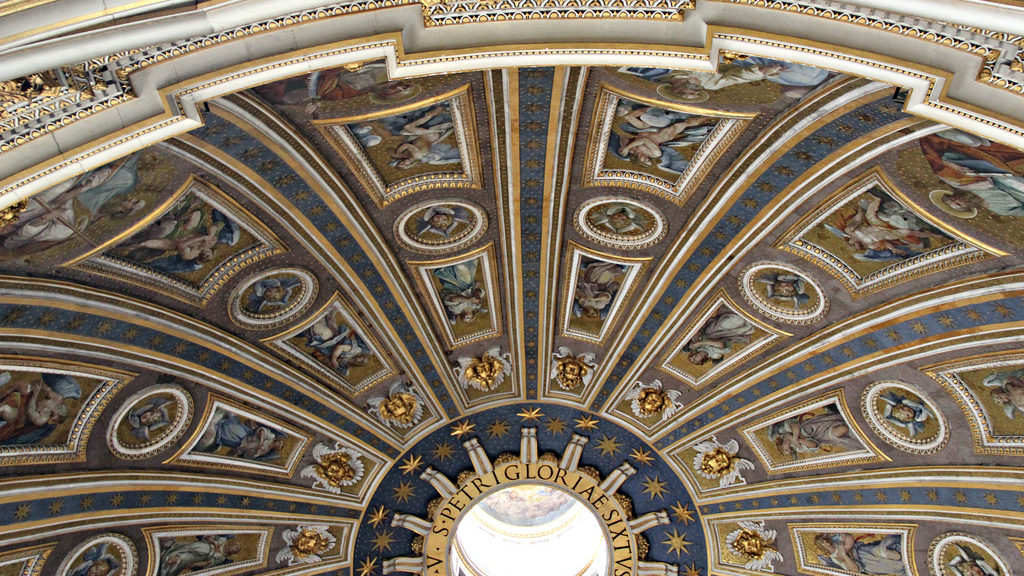
Vatican City: St. Peter’s Basilica
We traveled with Tauck on their Sicily, the Amalfi Coast and Rome Southbound tour in June of 2018. Since we opted for the southbound tour, we flew into Rome and arrived a day early. High on our list was seeing St. Peter’s Basilica, the Vatican Museum and the Sistine Chapel. These are all part of the Vatican City, a city state established in 1929 with an agreement between the Holy See and the government of Italy called the Lateran Pacts. In actuality, Vatican City had been recognized as sovereign for hundreds of years before the agreement was formalized. It is the smallest country in the world with the Pope serving as head of state.
We booked an independent tour of St. Peter’s Basilica through Walks of Italy. In addition to seeing the Basilica from the main level, we also took an elevator to an interior balcony which is at the base of Michelangelo’s Dome. The tour was an early morning one so we encountered much smaller crowds than when we visited the Basilica on our Classic Italy tour (you may view my pictures from that trip at https://sharingtravelmemories.com/st-peters-basilica/.) The pictures from our current visit are below. The first picture is of St. Peter’s Square. You can see one of two fountains and one of two colonnades. The Square symbolizes the arms of the church (the two colonnades) which welcomes people to the church. The next picture shows a member of the Swiss Guard. These soldiers have been responsible for the protection of popes since the 15th Century. The third and fourth pictures are of the exterior of the Basilica. The central balcony in the fourth picture is where new popes are presented after their election. The last picture is of the dome and was taken from a terrace on the roof of the Basilica.
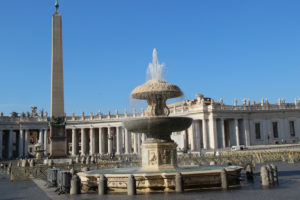
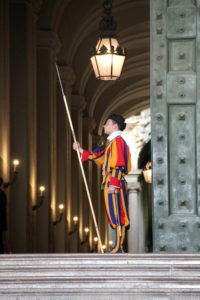
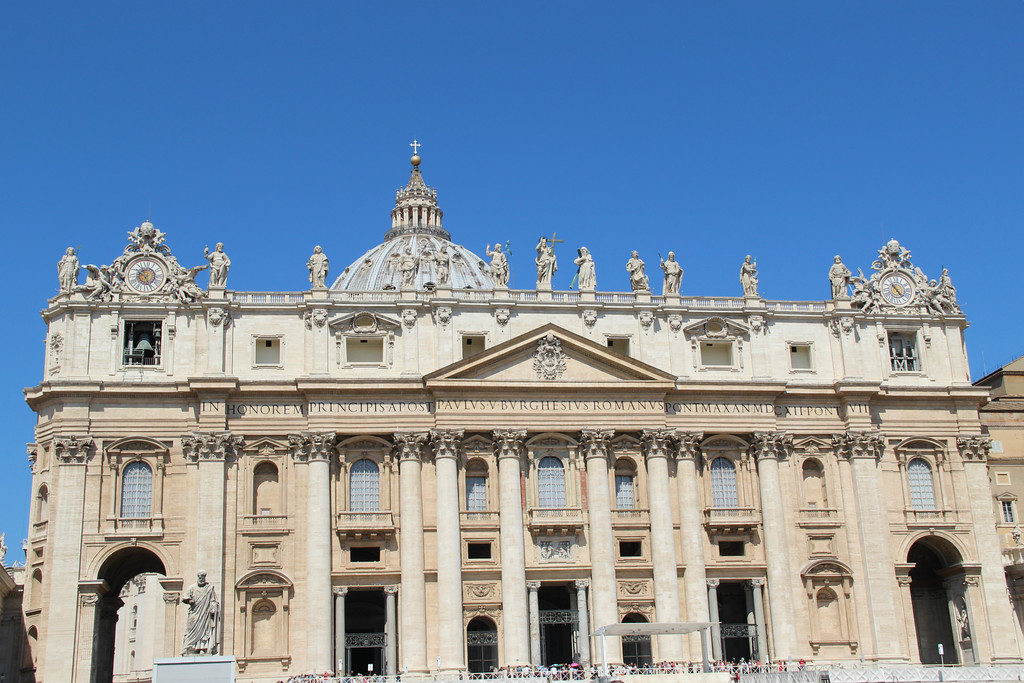
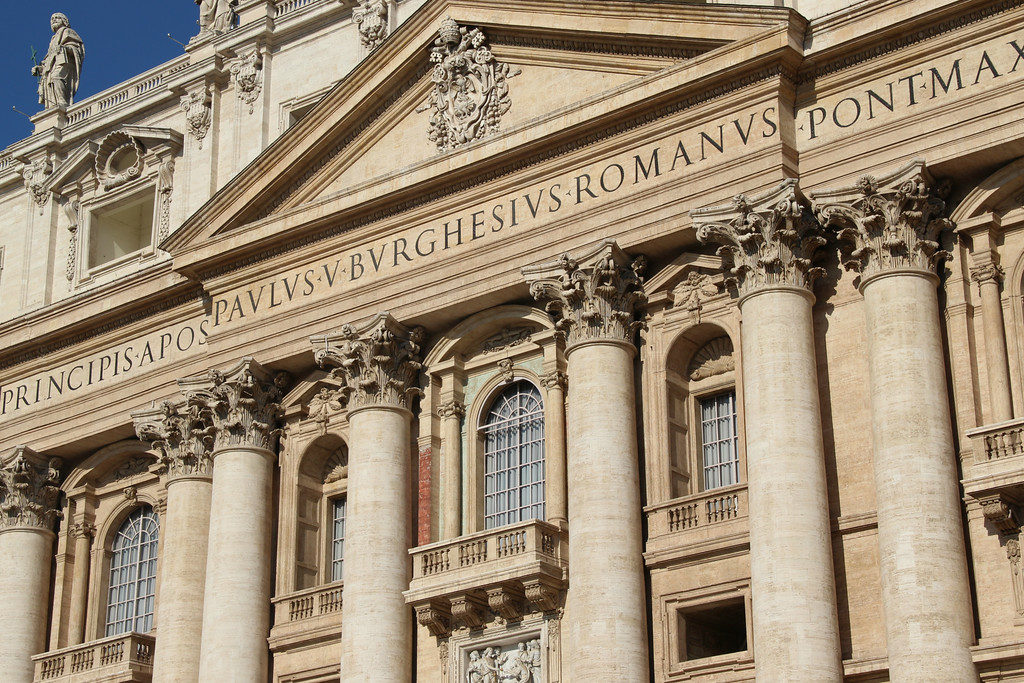
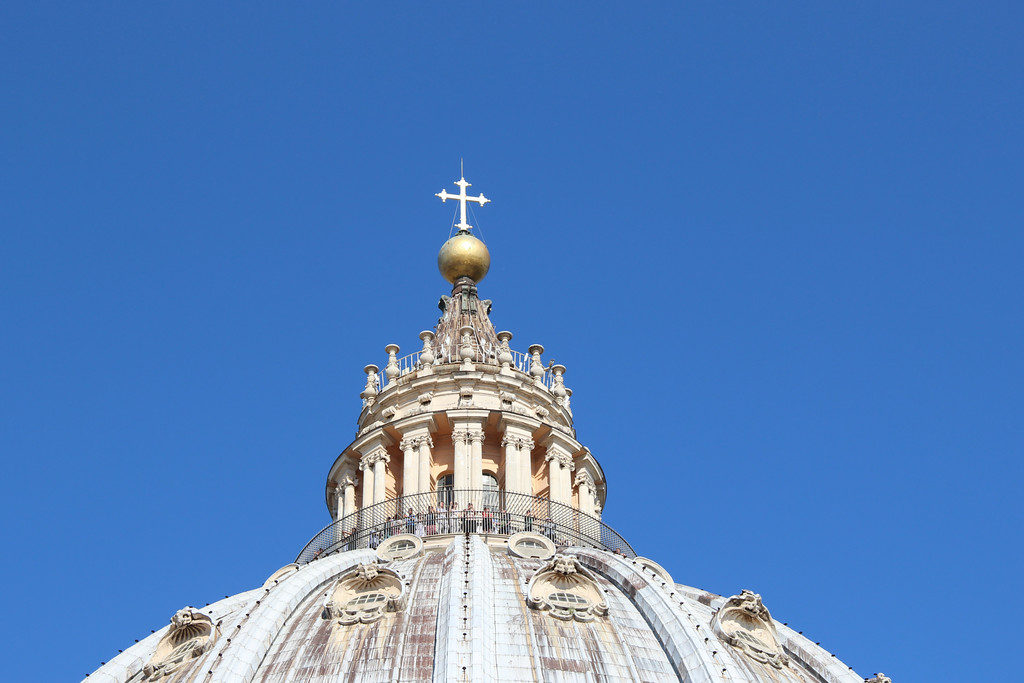
The elevator took us to an interior balcony at the base of the dome. While the dome is beautiful from the main level, seeing it up close gave us an appreciation for the detail of the work involved, particularly the mosaics. Below you will see two pictures of the dome (one taken through protective fencing) and another of a chapel. Also pictured are one of the medallions and an example of one of the intricate mosaics.
Some members of our group chose to climb the 281 steps for a view of St. Peter’s Square and Rome from the smaller dome or lantern (you can see people who made this climb in the picture above). We decided not risk cardiac arrest (281 steps is about 20 flights of stairs) and spent the additional time on an outside terrace on the roof of the Basilica. From there, we could get coffee, visit a souvenir shop and see the statues on the facade of the Basilica from behind. The statues along the facade are of Jesus, the disciples and Matthias, the disciple who replaced Judas. The statues are nearly 19 feet tall. Those who made the climb to the lantern showed us their pictures and the views are incredible – so if you have a strong heart, it is something you might want to do.
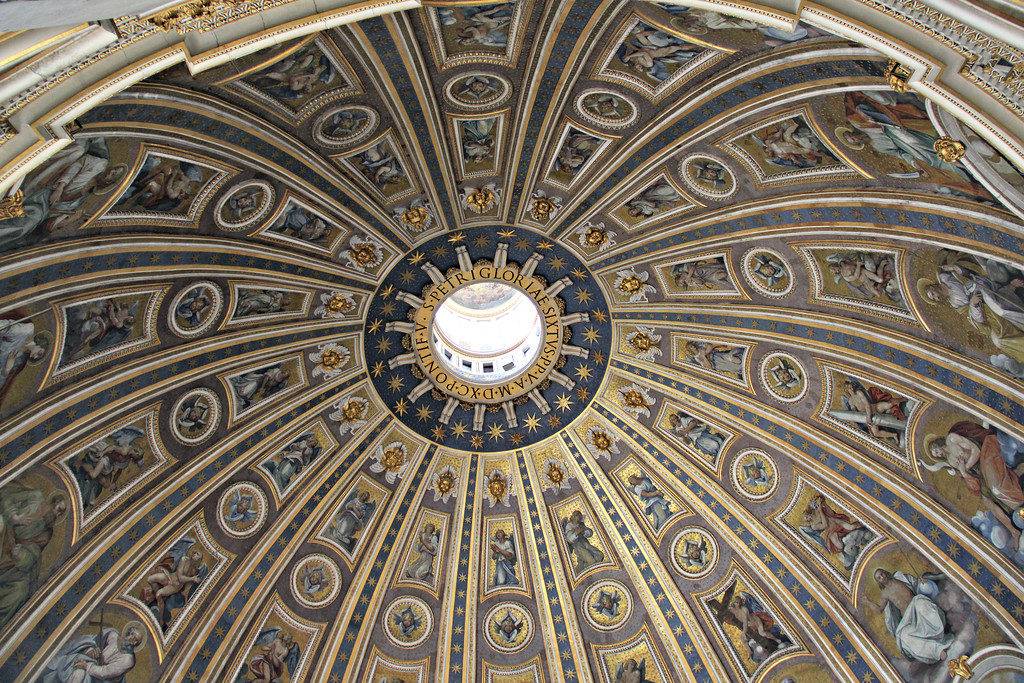
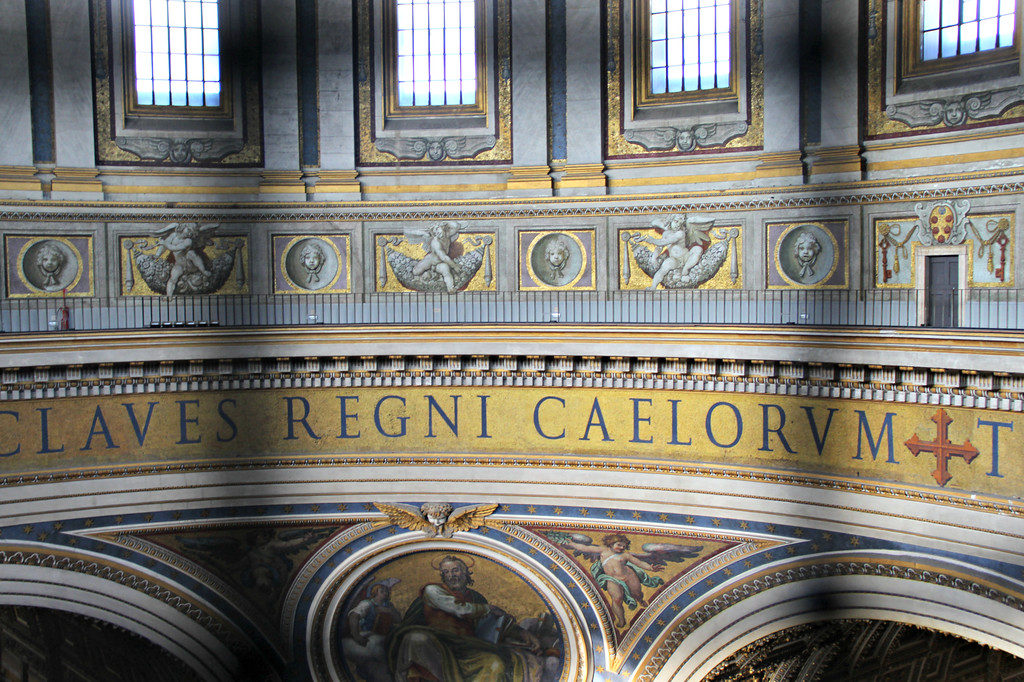
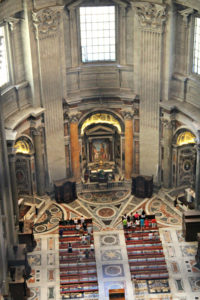
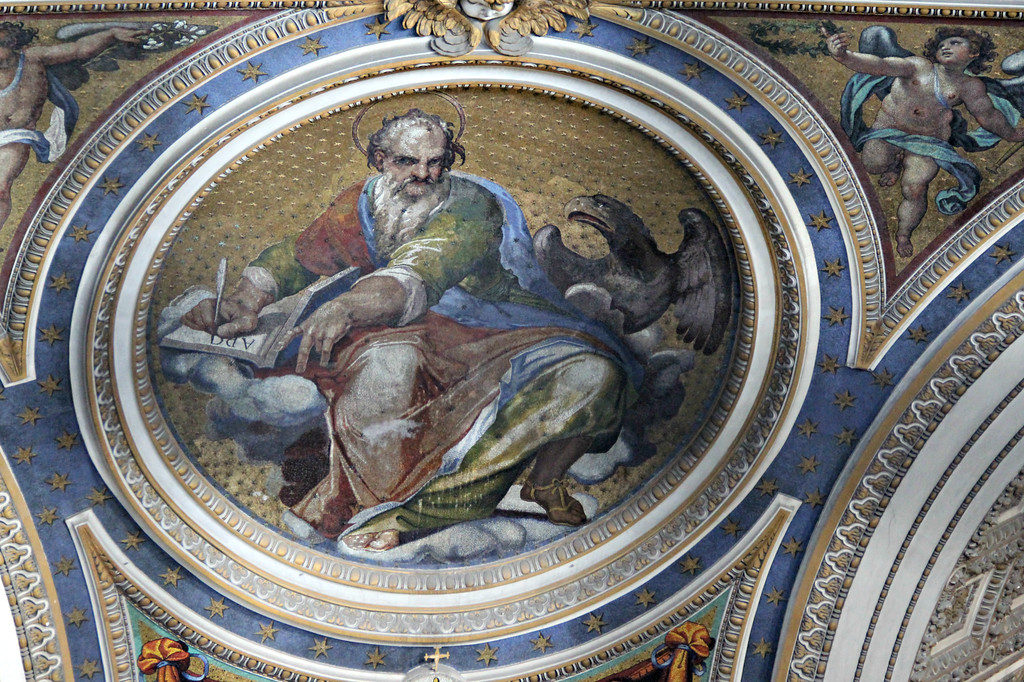
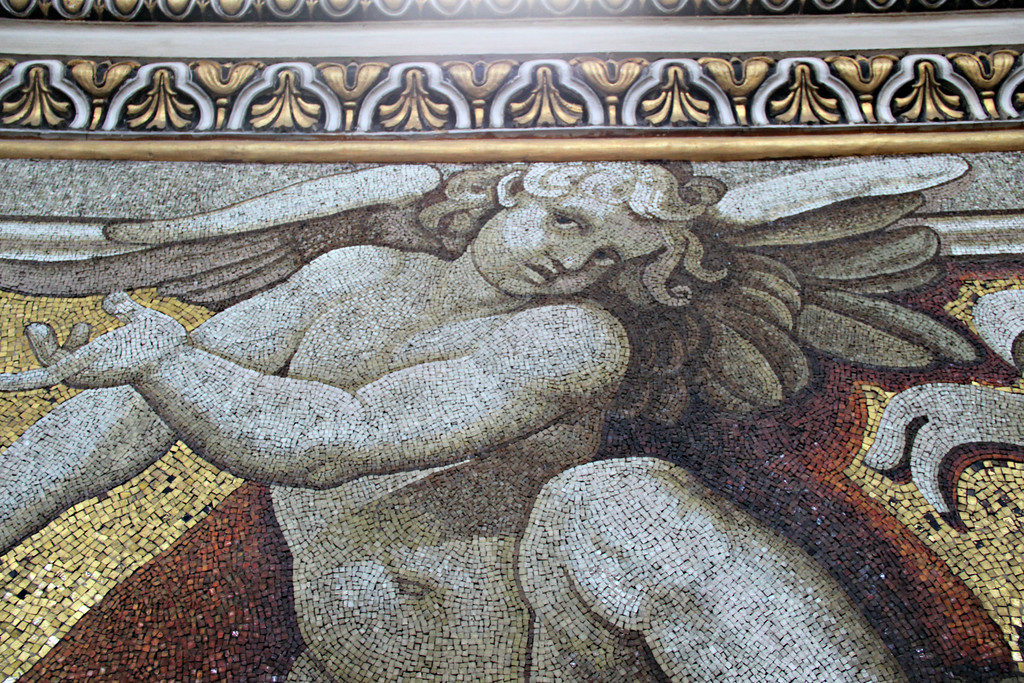
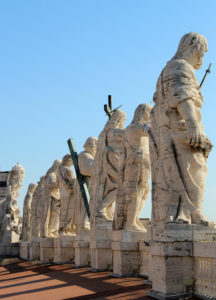
Next we went inside the Basilica on the main level. There is beauty everywhere – the floors, ceiling, windows, and walls. Father Jeffrey Kirby shares the following details about St. Peter’s Basilica in 101 Surprising Facts About St. Peter’s Vatican (2015):
The basilica is the largest Christian church in the world…The Super Bowl could be played in the nave, the center aisle, of the basilica. Besides the great dome, the basilica has ten other domes over side chapels. In all, the basilica has 290 windows, 597 pillars, 44 altars, and approximately 135 mosaics and 435 statues.
The first picture below, while it does not capture the entire Basilica, gives you a sense of its massiveness and beauty. The next picture is of Michelangelo’s Pieta, which means sorrow. Mary, sculpted as a young mother, is holding Jesus. Michelangelo was only 23 years old when he carved this statue, and it the only one that he signed. The third picture is of the Chapel of St. Sebastian and is where Pope John Paul II is interred. He is one of the few popes buried inside the Basilica (most others are in the crypt). Following this is a picture of a statue of St. Peter made around 1300. It is said if you touch the feet of the statue, you will be blessed. Interestingly, St. Peter’s left arm is in a sling representing human weakness and the need for popes to rely on the Holy Spirit for guidance. The next picture in this section is of a statue entitled The Funerary Monument to Alexander VII. He served as pope in the 1600’s. The statue is made of marble. The hourglass symbolizes the end of his life, the cloth symbolizes a funeral shroud and the door represents the passage to the next life. The last picture is of Michelangelo’s dome, this time taken from the floor of the Basilica.
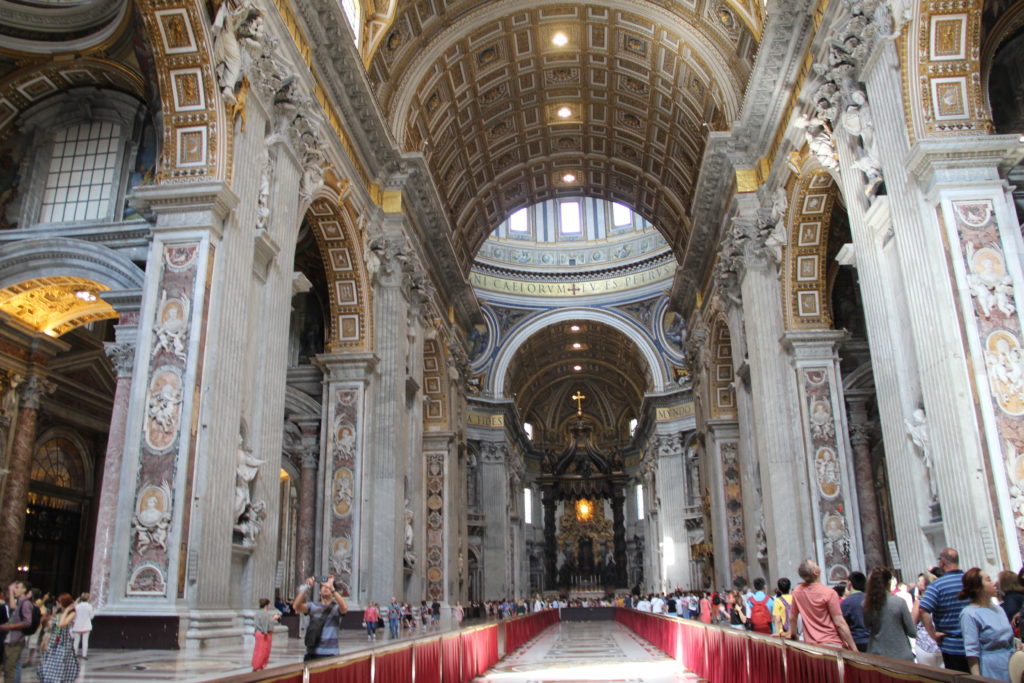
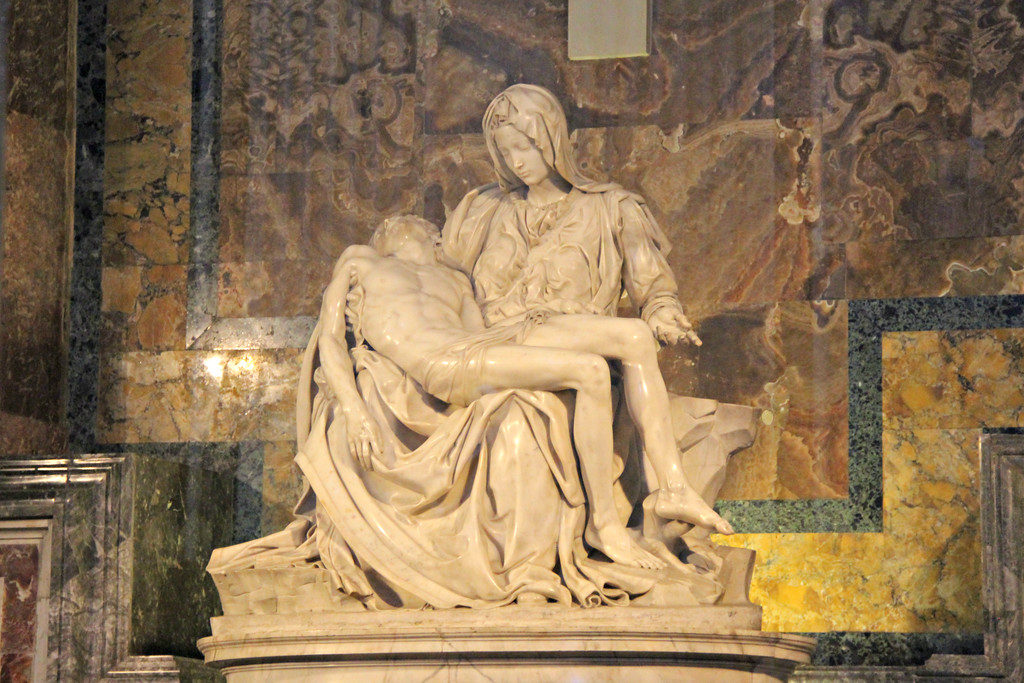
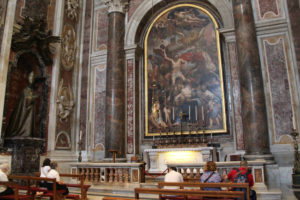
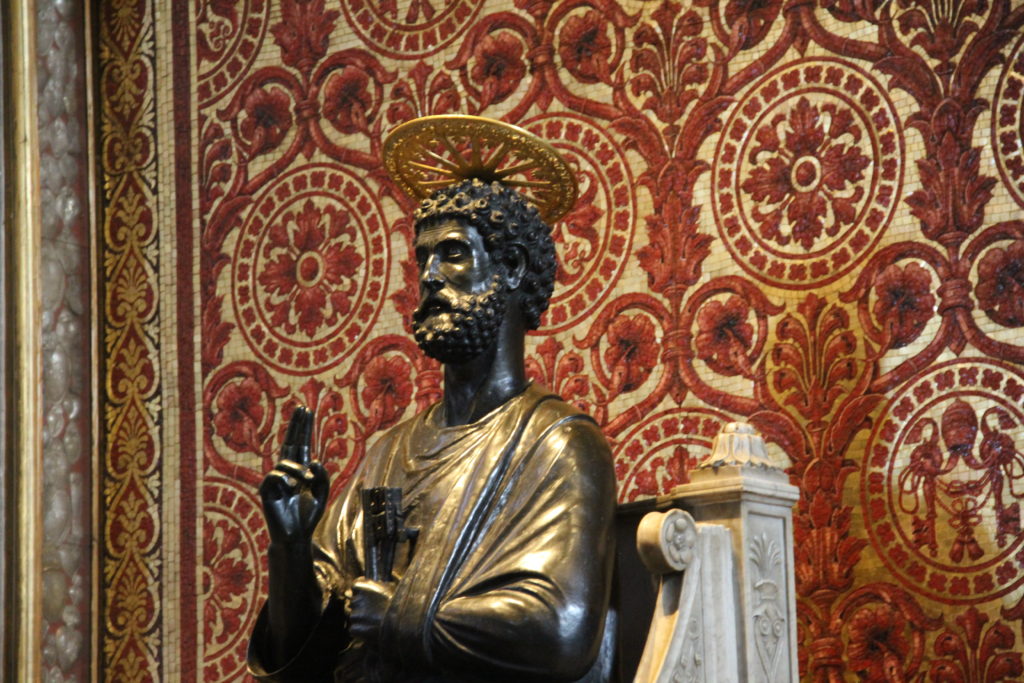
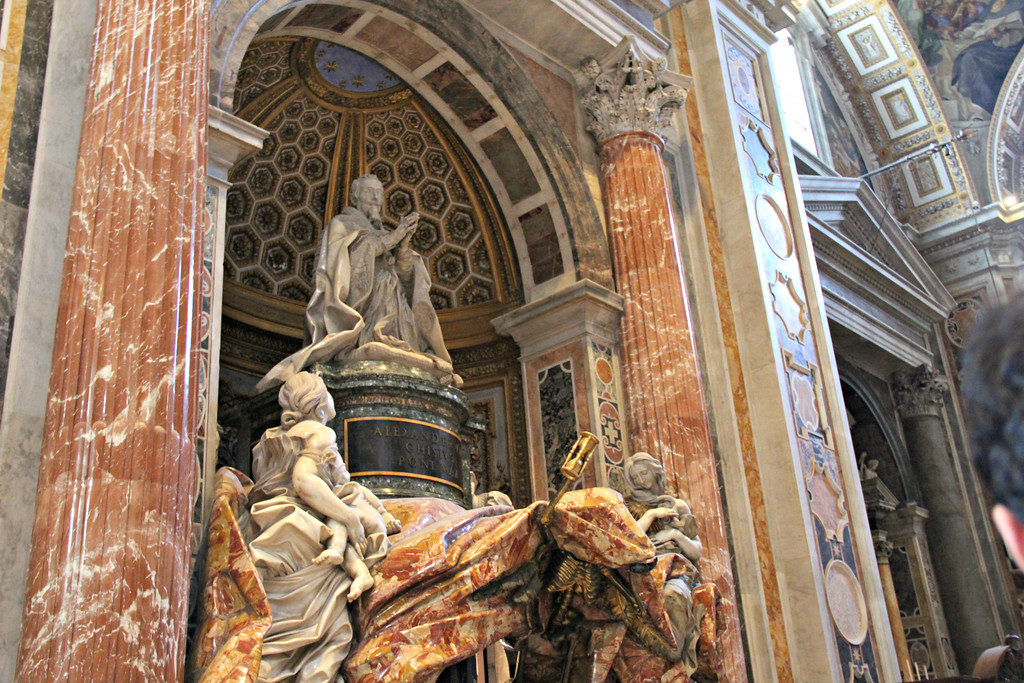
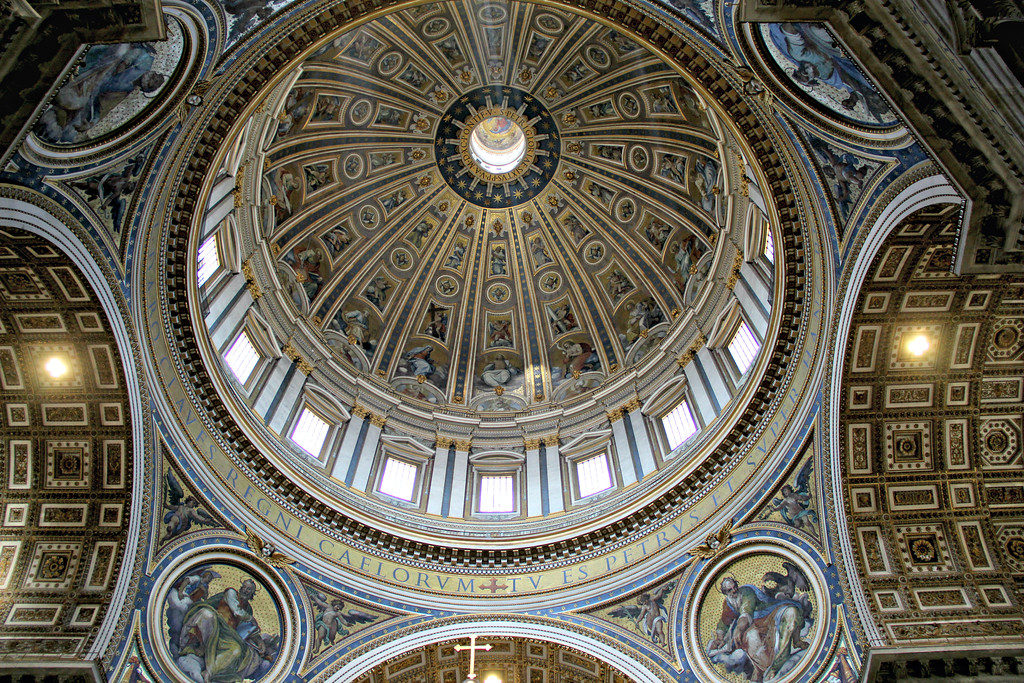
This is the Baldacchino in St. Peter’s Basilica. It is a canopy rising above the Altar of Confession. When we visited the Basilica during our Classic Italy tour, it was so crowded we could not get close to the Baldachhino and saw only the top part. Although there were many other people present during this visit, it was not nearly as crowded and we were able to see this remarkable piece in much more detail. Bernini was commissioned to create the Baldacchino and completed it in 1634. It is made of bronze which was taken from the portico of the Pantheon, a controversial decision at the time. The bronze was melted and then sculpted into the Baldacchino we see today. The bronze columns are decorated with gold. I found different reasons that the columns are twisted. One source said the columns are fashioned after the columns in the first St. Peter’s Basilica. Another said the twisted columns represented Jesus’ suffering when He was whipped before His crucifixion. The ceiling of the canopy has a dove representing the Holy Spirit.
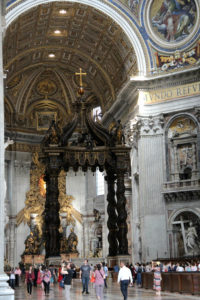
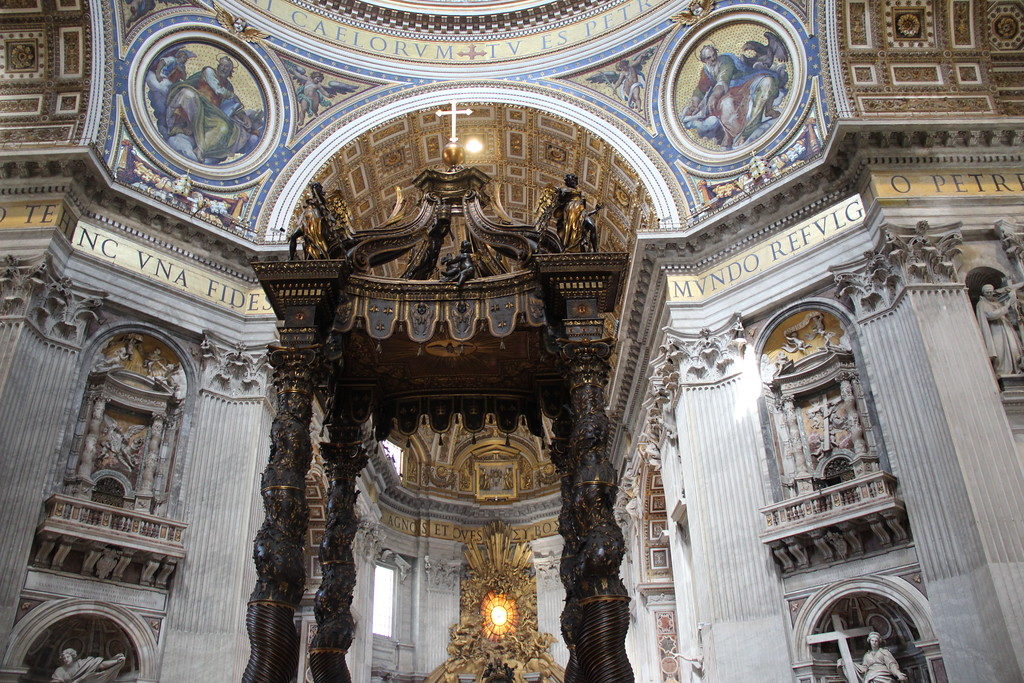
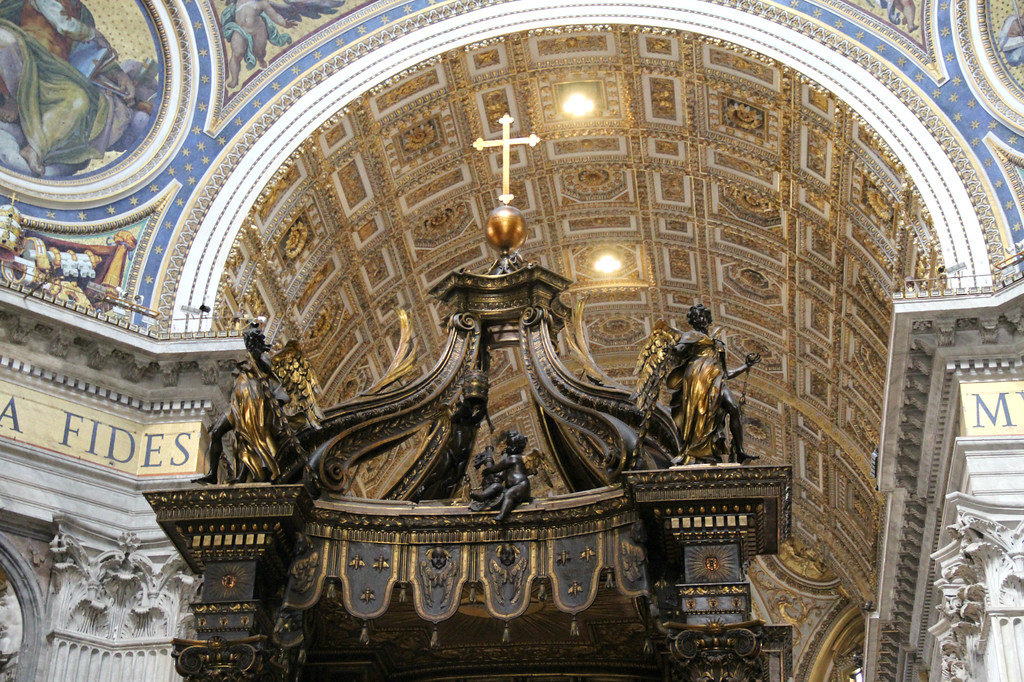
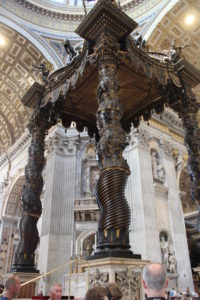
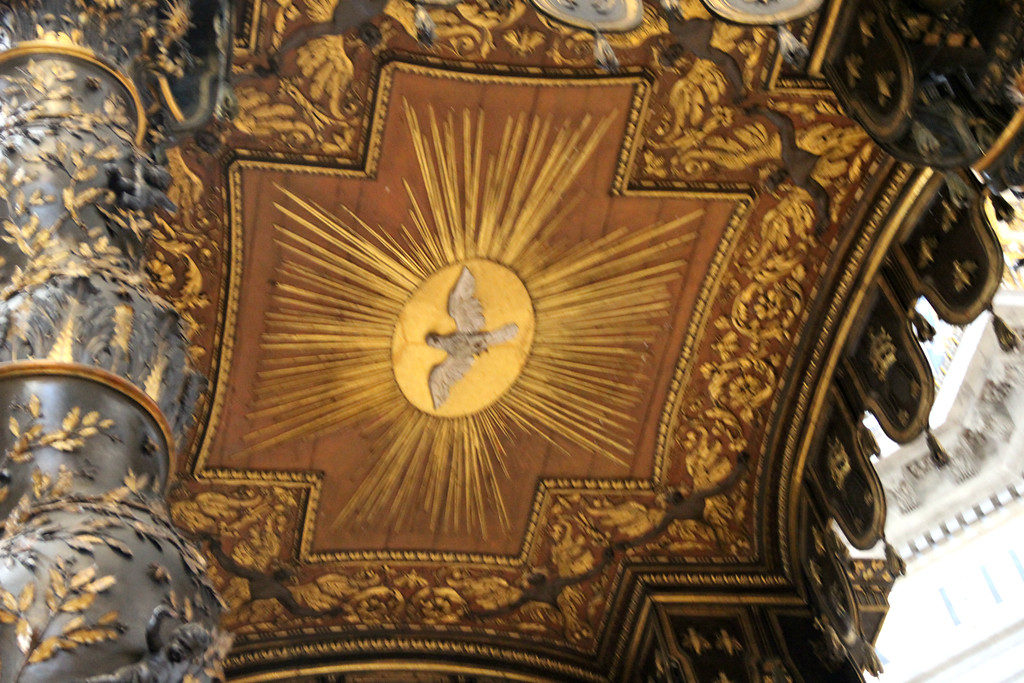
Directly below the Baldacchino is the Papal Altar, from which only the pope can celebrate mass. The current altar actually sits on top of older altars. The altar is made of a solid block of marble from Greece. The first picture is of the altar looking toward the front of the Basilica. The second picture is also of the altar, but as you look to the back of the Basilica. Behind the Baldacchino is the Chair of St. Peter. It is a wooden chair that is thought to be the chair he used while preaching in Rome. The wooden chair is encased in bronze which was designed by Bernini. It is not intended to portray a royal throne, but rather to symbolize service. Above it is the “Gloria Window” which is made of alabaster.
The Sepulcher of St. Peter, depicted in the last picture, is in front of the Baldacchino. Known as the Confessio, it refers to Peter’s confession of faith. Two sets of stairs, on either side of Sepulcher, lead to an urn. The urn does not contain St. Peter’s remains, but rather the pallia, which are white wool vestments worn by the pope, patriarchs and archbishops. They are made of wool to symbolize the clergy’s role as Good Shepherd. There are 99 candles surrounding the Sepulcher. St. Peter’s bones are believed to be buried below the Altar of Confession.
